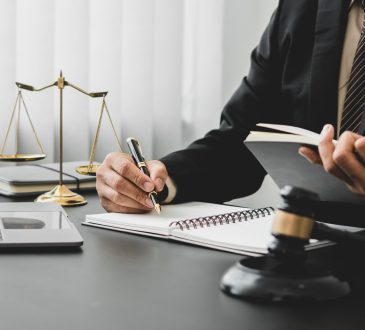
Accidents rarely present a single villain. In California, a person can be partly to blame and still pursue compensation, a reality that surprises many after a crash. This guide lays out what happens when someone files a Personal Injury Claim At-Fault, how comparative negligence works, how fault percentages move the settlement needle, and what seasoned lawyers do to protect rights in 2025. Drawing on California law and practical litigation tactics used by firms such as Cohen & Marzban, it explains how courts assign responsibility and how evidence shapes outcomes. The goal: help injured people understand their options without surrendering value just because fault is shared. Timing, paperwork, and strategy all matter. So does choosing counsel who can frame the facts before insurers do.
Understanding comparative negligence in California law
Pure comparative negligence, not all-or-nothing
California follows “pure comparative negligence,” established by Li v. Yellow Cab Co. (1975) and grounded in Civil Code §1714. That means an injured person’s recovery is reduced by their percentage of fault, but never eliminated unless fault is 100%. Even someone 80% at fault can recover 20% of proven damages. This system is more forgiving than “modified” comparative negligence in other states, where being 50% or 51% at fault can bar recovery entirely.
Prop 51 and how damages are allocated
Under Proposition 51 (Civil Code §1431.2), defendants are:
- Jointly and severally liable for economic damages (medical bills, lost wages). A single defendant can be made to pay the full economic loss, then seek contribution.
- Only severally liable for noneconomic damages (pain, suffering, inconvenience), which are limited to each defendant’s percentage of fault.
This split matters in any Personal Injury Claim At-Fault. If multiple parties share blame, say a distracted driver, a negligent employer, and a roadway maintenance contractor, economic losses might still be recoverable from one deep-pocket defendant, while noneconomic damages track fault percentage exactly.
The practical takeaway
Comparative negligence is not a technicality: it’s the engine that drives negotiations, jury instructions (see CACI 405, 406), and verdict forms in California personal injury cases.
Filing a claim when partially responsible for an accident
Filing when partially responsible is both common and strategic. The first objective is preserving claims while protecting against over-admissions.
Early actions that protect value
- Get medical evaluation immediately and follow through. Gaps in treatment can be spun as “not really hurt.”
- Report the incident accurately but avoid conclusory statements about fault. Facts first: fault is for adjusters, lawyers, and juries.
- Preserve physical evidence and identify witnesses. Names and phone numbers disappear fast.
- Keep damaged items (vehicles, helmets, ladders) unaltered: they may be key exhibits.
Dealing with insurers
Provide required notifications to one’s own insurer (PIP/MedPay/UM) and the at-fault carrier, but funnel substantive statements through counsel whenever possible. Adjusters often seek recorded statements designed to box claimants into unfavorable admissions about speed, distraction, or visibility.
Deadlines and special rules
- Statute of limitations: Generally two years from injury (Code Civ. Proc. §335.1). Medical malpractice and product claims have variants.
- Claims against public entities: Strict administrative claim within six months (Gov. Code §911.2), then a shorter window to sue.
- Evidence preservation letters should go out quickly to secure videos, telematics, and black-box data before they’re overwritten.
Experienced firms such as Cohen & Marzban coordinate these steps early so partial responsibility doesn’t balloon into outsized liability.
How fault percentages affect settlement calculations
Comparative fault isn’t abstract: it’s math that shows up in every demand letter, reserve calculation, and mediation brief.
The simple math of apportionment
Start with total proven damages (economic + noneconomic). Reduce the sum by the claimant’s fault percentage. If total damages are $300,000 and the claimant is 30% at fault, the gross recovery target is $210,000. That’s the starting point for settlement modeling.
Economic vs. noneconomic under Prop 51
- Economic damages: A single defendant might pay all economic losses even if only 10% at fault, then pursue contribution from co-defendants. This can increase leverage if a solvent, insured defendant is in the case.
- Noneconomic damages: Each defendant pays only their share of fault. If a defendant is tagged with 25% responsibility, they pay 25% of pain and suffering, no more.
Policy limits, liens, and real-world outcomes
Fault percentages interact with policy limits and liens (health insurance, Medicare, Medi-Cal, workers’ comp). If a primary insurer has only $50,000 in coverage, a high fault allocation to that insured may cap the practical settlement even though larger damages. Conversely, strong evidence shifting fault toward a commercial defendant with higher limits can unlock fuller value.
A well-presented Personal Injury Claim At-Fault shows clear damages, narrows the claimant’s fault, and identifies solvent parties, a combination that often moves adjusters off lowball offers.
Legal strategies to reduce liability in personal injury cases
Defense teams work to inflate a claimant’s fault. Plaintiff counsel does the opposite, without sacrificing credibility. Effective strategies in California include:
Reframing breach and causation
- Traffic code context: A rolling stop by the claimant may be technically wrong yet irrelevant if the other driver ran a red light at 50 mph. Causation eclipses minor breaches.
- Visibility and timing: Human-factors testimony can show an impact was unavoidable even though reasonable care.
Spreading and reallocating fault
- Identify additional tortfeasors: Employers (respondeat superior), vehicle owners (permissive use), product manufacturers (defect), and public entities (dangerous condition of public property). More at-fault parties means the claimant’s slice of blame shrinks.
- Comparative fault of nonparties: Allocate fault to settling or immune entities where law allows, to further reduce the claimant’s share.
Damages discipline
- Mitigation evidence: Showing diligent medical compliance blunts defense claims of avoidable harm.
- Preexisting vs. aggravated injuries: Treating physicians and biomechanical experts can separate old problems from crash-related aggravation.
Procedural leverage
- Time-limited, policy-limits demands backed by complete medicals and liability proof.
- Code of Civil Procedure §998 offers to shift costs when a defendant gambles and loses at trial.
- Early mediation with a robust brief, exhibits (scene photos, EDR data), and a credible trial posture.
Firms like Cohen & Marzban deploy these tools routinely, pairing careful case building with negotiation discipline to reduce perceived liability while amplifying provable damages.
When courts assign shared responsibility in 2025
In California, juries typically assign fault percentages via special verdict forms: judges do so in bench trials. The framework is steady in 2025: pure comparative negligence remains the rule, and CACI instructions guide deliberations on negligence, causation, and apportionment.
What’s shaping apportionment today
- Ubiquitous video: Doorbell, dashcam, and business surveillance often narrow disputes. Courts expect parties to obtain and authenticate this footage promptly.
- Vehicle data: Event Data Recorders and telematics from smartphones or fleet systems provide speed, braking, and seatbelt use data that jurors find persuasive.
- Rideshare and delivery cases: Multiple layers of responsibility (driver, platform, employer/contractor status) can lead to shared fault across several defendants.
- Micromobility: E-scooters and e-bikes introduce questions about roadway design, visibility, and rider conduct, often producing split fault.
How fact-finders think about percentages
Jurors commonly anchor around traffic laws, right-of-way rules, visibility, and credibility of witnesses. A candid acknowledgment of minor mistakes, coupled with strong proof of a defendant’s larger, causative errors, often results in more favorable percentages for the injured party.
The importance of clear evidence in fault-based claims
Evidence doesn’t just win cases: it calibrates fault. The cleaner the record, the smaller the claimant’s percentage tends to be.
Key evidence types
- Scene documentation: Photos from multiple angles, skid marks, debris fields, sightline obstructions, and lighting conditions.
- Digital data: 911 audio, CAD logs, black-box downloads, dashcam clips, rideshare trip data, and smartphone telemetry.
- Witnesses: Independent eyewitnesses carry outsized weight: prompt interviews preserve memory.
- Medical proof: Consistent complaints, diagnostic imaging, and a tight timeline from impact to symptoms.
- Expert analysis: Accident reconstruction, human factors, and life-care planning.
Preserve and package the proof
Early spoliation letters should go to opposing parties and third parties (stores, city agencies) that hold videos or maintenance records. Subpoenas and public records requests follow. Organizing the file into a compelling chronology, impact, treatment, restrictions at work, daily life changes, makes causation intuitive for adjusters and juries.
When a Personal Injury Claim At-Fault is supported by this kind of record, the debate shifts from “who’s to blame?” to “how much is owed?”, a much better place to be.




